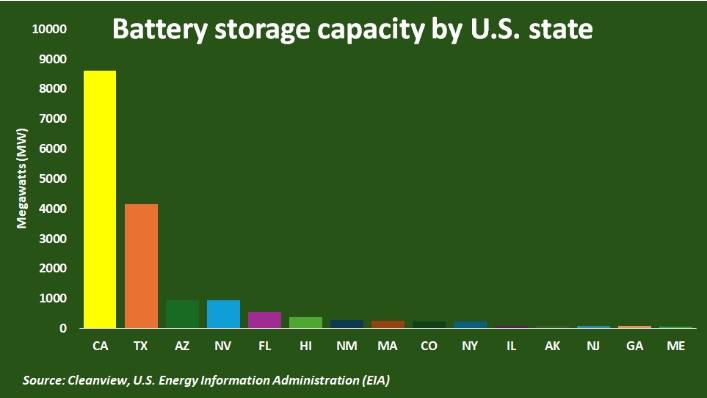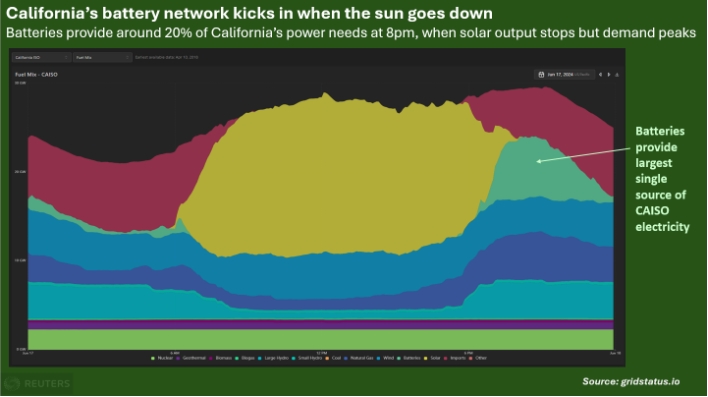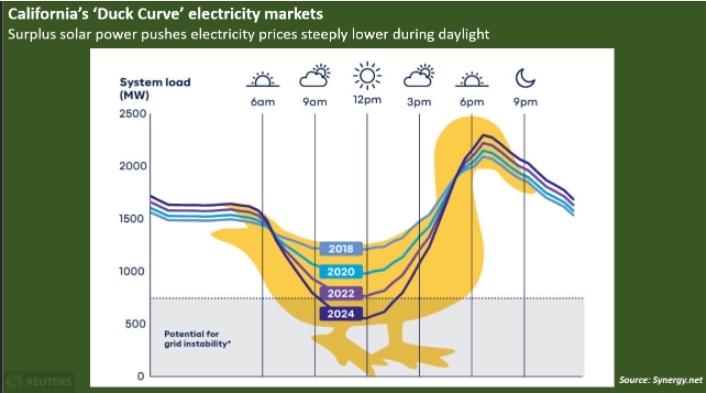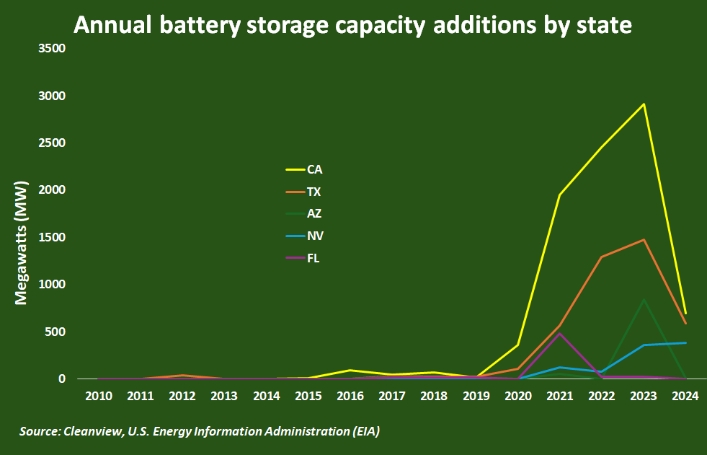
California's 8.6 gigawatts (GW) of battery storage capacity accounts for roughly half of all utility-scale battery capacity within the U.S. and is twice as much as the capacity in place in Texas, the second-largest deployer of battery storage.
Total battery storage capacity in the U.S. is currently estimated at around 17.5 GW, according to the U.S. Energy Information Administration and Cleanview.

Battery storage capacity by U.S. state
But that total could jump beyond 30 GW by the end of the year "if developers bring all of the energy storage systems they have planned on line by their intended commercial operation dates," according to the EIA.
GROWING SHARE
Such a rapid rise in battery storage capacity will allow power system managers to store increasing volumes of excess power generated by solar and wind farms, and then discharge that surplus power to consumers once renewable generation declines.
Power producers in the California Independent System Operator (CAISO), the state's power system, already use battery storage to supply as much as 20% of the system's electricity during peak consumption periods, data from gridstatus.io shows.
For some periods during the CAISO system demand peak in early evening, batteries can be the largest single source of electricity, surpassing the volumes generated by hydro dams, nuclear reactors and natural gas plants.

California’s battery network kicks in when the sun goes down
Such a high utilisation of batteries to manage system generation flows has important consequences both locally and nationally.
Within CAISO, growing battery capacity has allowed system managers to store increasing volumes of surplus power generated by California's solar farms during the middle of the day, when system demand is usually at its lowest.
By diverting some of that surplus power into batteries rather than onto the grid, CAISO managers can alleviate the so-called Duck Curve effect on prices which tend to swoop sharply lower when solar output peaks and then rise in the evening.

California’s ‘Duck Curve’ electricity markets
As CAISO's solar capacity has outpaced the growth in battery capacity, CAISO power prices still undergo regular periods of weakness during sunny periods.
But as more battery capacity is added to the system, battery storage should be able to limit the pressure on prices and help the CAISO managers improve system balances through the day.
NATIONAL GUIDE
CAISO's growing battery capacity and resulting expertise in storage utilisation will also help power system managers elsewhere in the United States.
Solar capacity has outpaced the supply growth of all other power forms in most major U.S. power systems in recent years, and many system managers are grappling with the issue of generating too much solar capacity during sunny periods, and not enough clean power during other times of the day.

Annual battery storage capacity additions by state
Batteries can help solve that mismatch by storing growing quantities of surplus power for later use, by effectively shifting some of that surplus output from low-demand periods to times when consumer demand is highest.
Batteries can also ensure that overall system generation mixes can continue to get cleaner by allowing producers to phase out outdated fossil-fuel plants and continue to expand the footprint of renewable and other clean energy assets.







